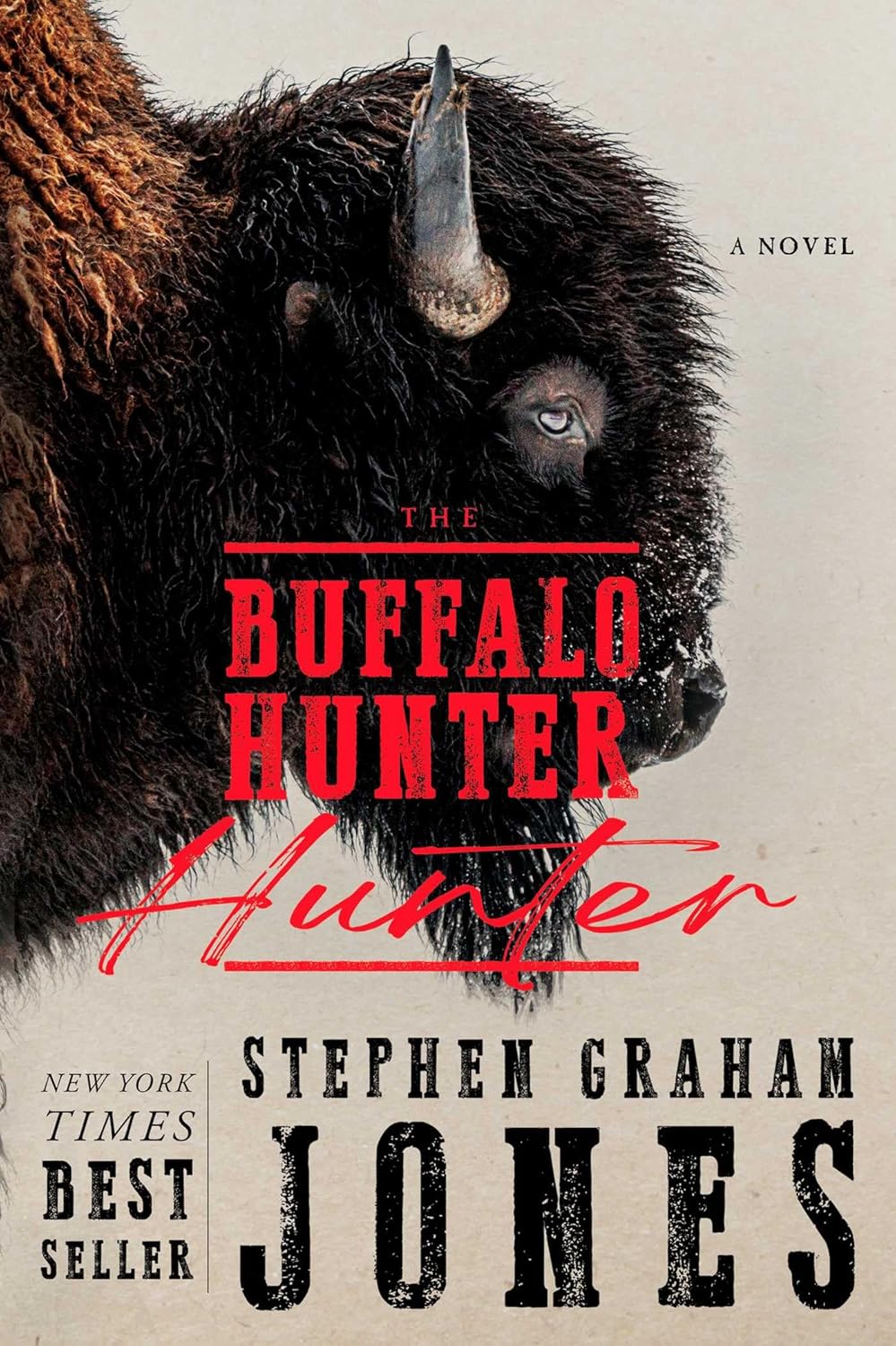The Buffalo Hunter Hunter

Author: Jones, Stephen Graham
Tags: horror
Timeline: between Sunday, September 14, 2025 and Tuesday, September 30, 2025
“Either way, the time for scalping is well behind us,” I said. “This is a new day, is it not?” I lifted my arms, enveloping the whole grand chapel, and the civilized town beyond it. “Or it’s a single, long night,” he said, looking the other way from the flickering candle, which I perceived was possibly still causing him slight injury.”
The setting is the old, but mostly civilized, west of 1912 where an indian starts showing up on Sundays at Arthur Beaucarne’s Lutheran church in Miles City Montana. The indian wants to confess his many murders and Arthur accepts the task of giving this savage an ear as part of his clerical duty and (we eventually learn) because of a guilty conscience. The indian’s name is “Good Stab” and is wearing sunglasses because of an “eye condition” so Arthur dims the church to candle light. Good Stab’s story will drag out over several Sunday sessions.
Meanwhile the corpses start showing up in the prairie on the outskirts of the city. The corpses are all mutilated and skinned. It’s not a coincidence that Good Stab has chosen Beaucarne to hear his story. Over the course of the narrative it becomes clear that Good Stab is a vampire and he has grievances over what became of his tribe and the buffalo over the last 75 years.
I wanted to like this book, I liked the cover and the ambition of the book, to have a vampire story set in the mostly settled Montana of 1912, where the vampire is taking revenge for the colonial destruction of his culture, his family, his tribe and also for the near extinction of the Buffalo. But, to summarize, while I finished the book, no, I didn’t love it.
What worked:
Our vampire, “Good Stab” is a sad, aggrieved vampire and the book describes vividly the brutality of how the aboriginal people were treated, the mechanical techniques used to slaughter the buffalo, so we can feel the agony with him. The most important, specific grievance is the massacre of his village, that takes place in 1839 in which Beaucarne is a bit player (why Good Stab is “confessing” in Beaucarne’s church)
The book, of course, has its own set of rules for the vampire, for example in this story the vampire will take on attributes of its food, for example if it feeds on deer it will grow antlers, which found interesting (but then again I have not read that many vampire novels…)
What didn’t work:
I did not find the setting, Miles City Montana to feel very vivid: It was always kind of soft focus in spite of it being the setting for half the plot.
When the book tells Good Stab’s story it frequently uses blackfoot terminology, especially for the names of animals: It was confusing and distracting to keep track of “wags-his-tail” (deer), “dirty face” (mouse) and several others, I believe the use of blackfoot vocabulary was fine for adding verisimilitude to the story but, on the other hand, this ain’t Shakespeare, the author could’ve thrown us some context clues to reduce cognitive “friction” for the reader.
And the biggest problem: midway through the book we are aware that the target for Good Stab’s retribution is Beaucarne. But then, apparently, Good Stab decides, to just stalk, to toy with his prey and we get many pages where Beaucarne is just waiting in dread for his fate to be decided and while that might be more frightening for Beaucarne it was boring for me. I found that region of the plot to be long and tedious to the point where I stopped reading for about a week.
What also (finally) worked:
After I returned to the story I didn’t have to read too much more before I got to the final chapter told in 2013 by Beaucarne’s great, great, great granddaughter who gets to tie up the loose ends in the story and the last 20 pages of the book is its best part where our modern day protagonist has to arrange a final resolution for a vampire, in a madcap, macabre, macgyverish, improvised sequence of violence. For me, it was this last part of the book that rescued the story.